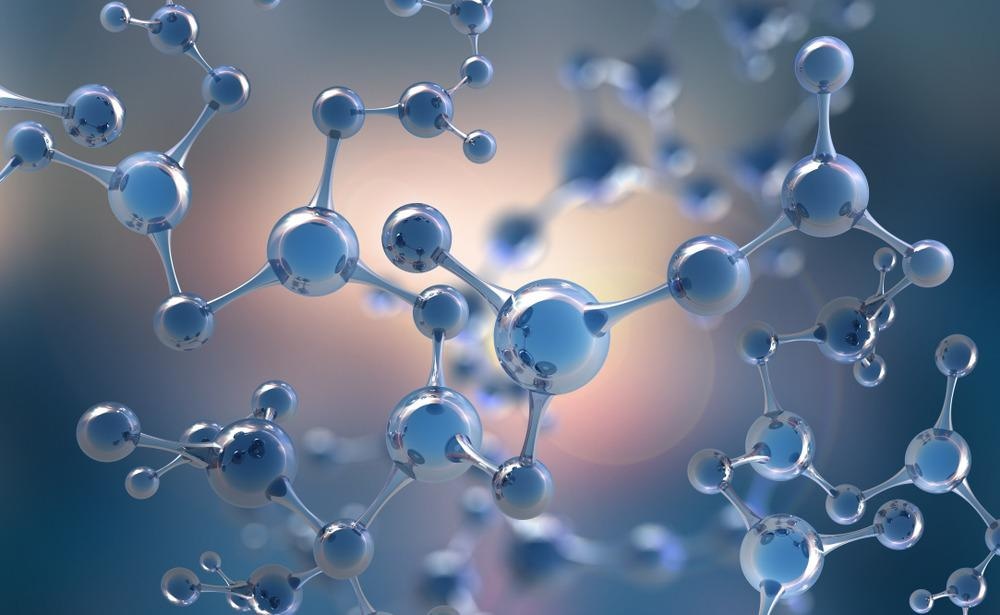
Image Credit: Yurchanka Siarhei/Shutterstock.com
Polyimide (PI) nano-aerogels were originally developed to overcome the low thermal stability of traditional nano-aerogels. Combined with improved thermal stability characteristics, PI nano-aerogels retain desirable density, porosity, and thermal conductivity properties, which have led to their use in various fields.
What are Nano-Aerogels?
By definition, aerogel is an open-cell material that is often regarded for its low density, high porosity, low dielectric constant, highly specific surface area, and ultra-low thermal conductivity. In addition to these properties, the term aerogel is typically reserved for materials with a volume dominated by pores.
Aerogels' unique characteristics have led to the development of nano-aerogels, which exhibit a three-dimensional (3D) nanoporous network. Nano-aerogels have been incorporated into thermal insulation materials due to their low thermal conductivity and photocatalytic devices, and sound insulation materials.
Nano-aerogels have been used to construct adsorption storage units for various disciplines ranging from aerospace and cleaning applications to electronic communication services.
They are often classified as either inorganic or organic nano-aerogels, depending upon their chemical composition. For example, inorganic nano-aerogels are typically used with inorganic fiber cloths or polymers to enhance the strength and mechanical properties of these materials. Some examples of inorganic nano-aerogels include those comprised of silica, titanium dioxide, and zirconium dioxide.
Some of the specific mechanical properties that are improved when organic nano-aerogels are employed include hardness, strength, toughness, and flexibility. Despite their advantageous properties, organic nano-aerogels are limited in their thermal stability, limiting their usefulness in high-temperature environments.
Polyimide Nano-Aerogels
To overcome the limitations of traditional organic nano-aerogels, a new class of organic nano-aerogels has been investigated. These novel materials include polyimide (PI) nano-aerogels, which are associated with a high degree of flexibility while maintaining exceptional durability.
PI nano-aerogels possess both high modulus and superinsulation properties, which have demonstrated a tensile strength that is up to 500 times greater than conventional organic aerogels. Furthermore, PI nano-aerogels remain stable when exposed to temperatures as high as 600 °C.
In addition to their classification as organic aero-gels, PI aero-gels can be further subdivided into either linear or crosslinked PI nano-aerogels. For example, Linear PI nano-aerogels are formed through a physical crosslinking between molecules, which results in a considerable volume shrinkage as the material dries.
Comparatively, the 3D network structure associated with crosslinked PI nano-aerogels is created through crosslinking agents. The use of these agents in the development of crosslinked PI nano-aerogels eliminates the shrinkage rate that usually occurs with linear PI nano-aerogels while simultaneously improving their mechanical properties.
Applications
The exceptional thermal stability and insulation properties of PI nano-aerogels, combined with their advantageous mechanical properties, make these materials particularly useful for thermal insulation materials, as well as both dielectric and moisture-proof materials.
Thermal Insulation Materials
Several studies have demonstrated that the nanoporous network structure that comprises PI nano-aerogels can effectively reduce heat transfer at room temperature with an estimated efficiency of 0.014 W/(mK).
PI nano-aerogels have been used during deep space exploration activities by the National Aeronautics and Space Administration (NASA) of the United States. More specifically, NASA found that the application of PI-nano-aerogels into the thermal protection system of the Hypersonic Inflatable Aerodynamic Decelerator (HIAD) successfully prevented heat from escaping the system. PI nano-aerogels' ability to prevent heat flow transmission in the HIAD system has led to its use in several other aerospace systems, some of which include propellant tanks, spacesuits, probe vehicles, and aircraft.
Communication Devices
The hydrophobic properties of aerogels generally result in significant changes in their dielectric constant. However, the synthesis of PI nano-aerogels with certain raw materials or introducing groups has been found to reduce these materials' dielectric constants to much lower levels.
When incorporated into the substrate material of microchip patch antennas, PI nano-aerogels have demonstrated lower RF loss, improved impedance matching, wider frequency bands, and a greater efficiency level, particularly compared to other types of substrate materials.
Furthermore, the low dielectric constant of PI nano-aerogels can also increase the rate of signal transmission in electronic communication devices and global positioning systems (GPS) and reduce any potential signal crosstalk in these devices.
PI nano-aerogels can reduce leakage current and the capacitive effect between wires and circuit heating within integrated circuits. When incorporated directly into the communication device, PI nano-aerogels have been shown to reduce the device's total weight by up to 70%.
Comparatively, when integrated into the antenna, PI nano-aerogels can increase the communication range by up to 80%. These properties support the use of PI nano-aerogels within practically any field, particularly applications involving electromagnetic radiation such as anticollision detectors used in the bumpers of automobiles, as well as wireless routers and radar devices.
References and Further Reading
Noroozi, M., Panahi-Sarmad, M., Abrisham, M., et al. (2019). Nanostructure of Aerogels and Their Applications in Thermal Energy Insulation. ACS Applied Energy Materials 8; 5319-5349. doi:10.1021/acsaem.9b01157.
Shi, B., Ma, B., Wang, C., et al. (2021). Fabrication and applications of polyimide nano-aerogels. Composites Part A: Applied Science and Manufacturing. doi:10.1016/j.compositesa.2021.106283.
Aerogels: Overview and Outlook for Future Space and Terrestrial Applications at NASA. [Online]. Available from: https://ntrs.nasa.gov/api/citations/20180005488/downloads/20180005488.pdf.
Disclaimer: The views expressed here are those of the author expressed in their private capacity and do not necessarily represent the views of AZoM.com Limited T/A AZoNetwork the owner and operator of this website. This disclaimer forms part of the Terms and conditions of use of this website.